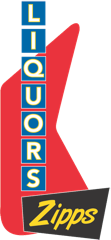The Perfect Winter Wine
- On January 7, 2016
It’s cold and it’s dark. The merriment of the holidays is over and it’s quiet around town. Many of us have started our New Year’s resolutions to eat better, exercise more, learn something new, and maybe drink less. However, this is not the time of year to deprive yourself of life’s little pleasures. When the doldrums hit and the “why do I live here?” laments start, that’s the perfect time to treat yourself to a satisfying meal and a great bottle of wine, wine that warms you up and makes the winter cold seem somewhat bearable. We have many great bottles to keep the cold out and a great place to start is Bordeaux.
Bordeaux is one of the first great wine regions of the world with a history dating back to roman times. The red wines started out as light pinkish wine, what we would today call a rosé, and what was then called a Claret by the British. The wines became world famous when Napoleon III had the best wines of Bordeaux ranked for the 1855 World’s Fair in Paris. The Bordeaux Wine Official Classification of 1855 is still in place today and ranks the best Chateau from 1st Growth to 5th Growth, with many a Chateau not ranked. The 1st Growth Bordeaux wines were those that fetched the highest price in 1855 and the rest were ranked from there. Today the 1st Growth Bordeaux of Chateau Mouton-Rothschild, Chateau Lafite-Rothschild, Chateau Latour, Chateau Haut-Brion, and Chateau Margaux are still the most expensive wines of the region, fetching hundreds to thousands of dollars per bottle depending on the vintage and rarity of the wine.
The interest in these wines in the U.S. has waned in the last couple of years due to soaring prices of 1st Growth to 5th growth and even the inexpensive wines. This increase in price was mostly related to extremely high demand for these wines in China. The Asian markets (essentially wine stock markets) have moved on from Bordeaux and the prices have started to decrease and there are better, more affordable red Bordeaux coming into Minnesota which makes this the perfect time to revisit this area or try it out for the first time.
By appellation law red Bordeaux can only contain Cabernet Sauvignon, Merlot, Cabernet Franc, Malbec, Petit Verdot, and Carmenere. What you’ll mostly run into are blend of Cab Sauv, Merlot, and to a lesser extent Cabernet Franc. How can you tell what’s in the wine? (It doesn’t usually say on the front). You can memorize all the appellations in the Right Bank (of the Gironde river which runs through Bordeaux) to know they are all Cabernet Sauvignon based and the Left Bank areas produce wines with mostly Merlot. Or… take a look at the back label and most will tell you the percentage of each varietal in the blend. If you don’t think you like Merlot, I challenge you to try it in the blended Bordeaux form. Merlot is soft and supple and can round out the tannic and sometimes harsh Cabernet Sauvignon and give you a perfect marriage of flavors, something they’ve been doing in Bordeaux for a few hundred years. These wines are the perfect winter warmer and go great with all the stews, roasts, and hearty meals we love this time of year. The prices start at just $9.99!



0 Comments